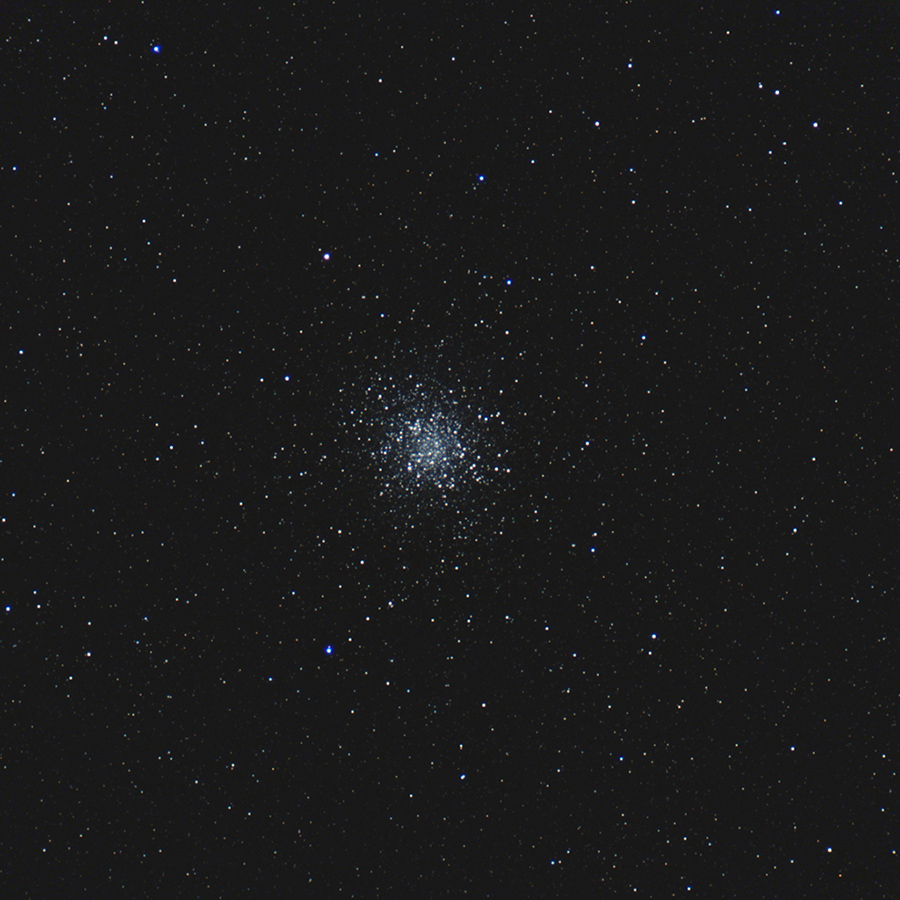
Telescope: Unitron 510 5” f/16 refractor, Atlas EQ-G
Camera: Canon EOS Ra full frame DSLR
Filter: 2” ZWO IR Cut Filter
Guide scope: Williams Optics 50mm Guidescope, ASI290MM, PHD
Exposure: 50x30sec, ISO 1600, saved as RAW
Darks: Internal (Long Exposure Noise Reduction)
Flats: 32×1/10s sky flats taken at dusk
Average Light Pollution: Bortle 8, poor transparency, haze, smoke
Lensed Sky Quality Meter: 18.1 mag/arc-sec^2
Stacking: Mean with a 1-sigma clip
White Balance: Nebulosity Automatic
Software: Backyard EOS, Deepsky Stacker, Nebulosity, Photoshop
M22 is a large, bright, class 7 globular cluster in Sagittarius. With an estimated distance of 10,600 light years it is one of the closer globulars in our galaxy. In many ways M22 should outshine M13, but it can get a bit lost among the stars along the Milky Way near the Sagittarius star clouds and its light is dimmed by dust along the galactic plane. Still, it is large, bright, and easily resolves into this beautiful glow of stardust even in a modest telescope. In a large telescope it blossoms into a glorious sight. This is one of the gems of the summer sky in the northern hemisphere.
This is the second of 5 test images taken with my Unitron 510. M22 is currently rising in the southeast as the sky darkens. (Photo credit; John Graham, 7/14/2023)
Recent Comments